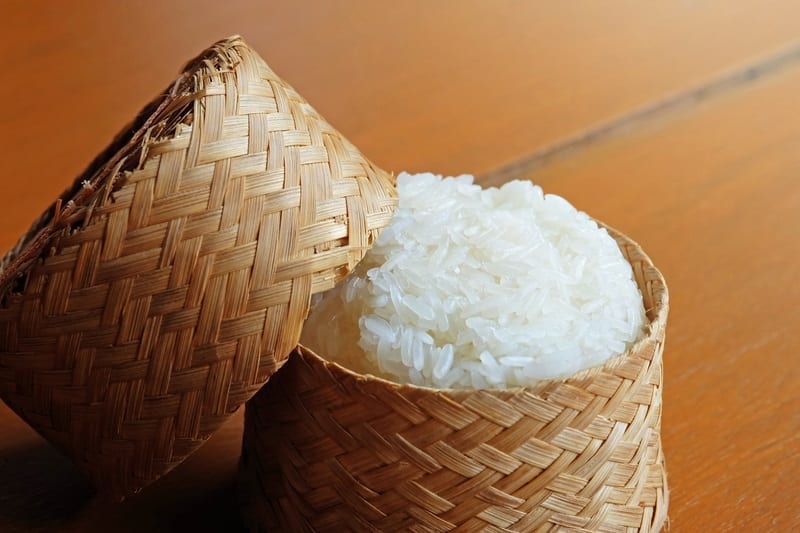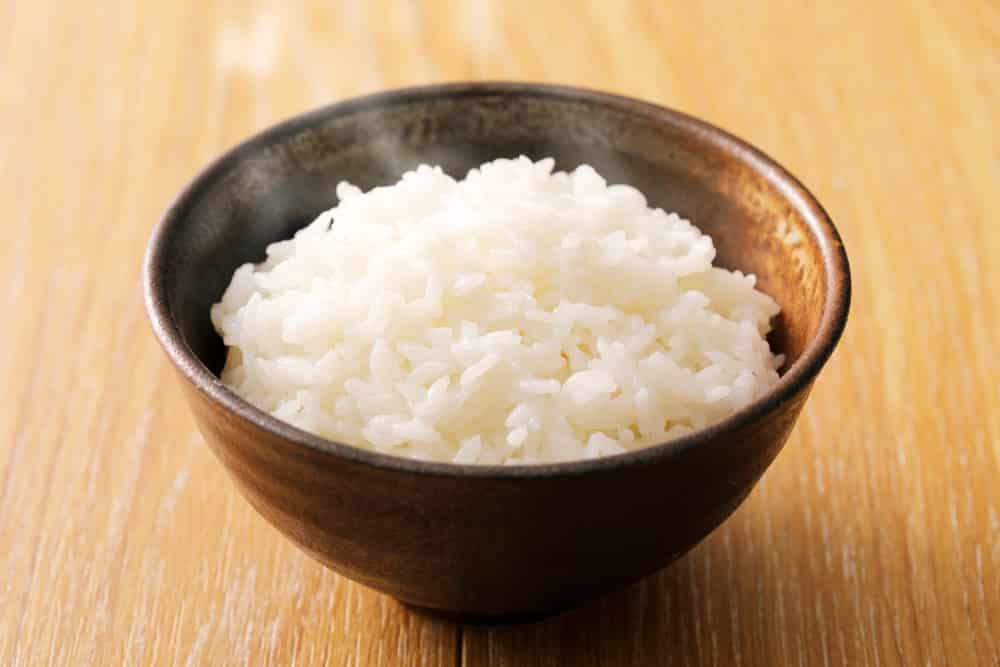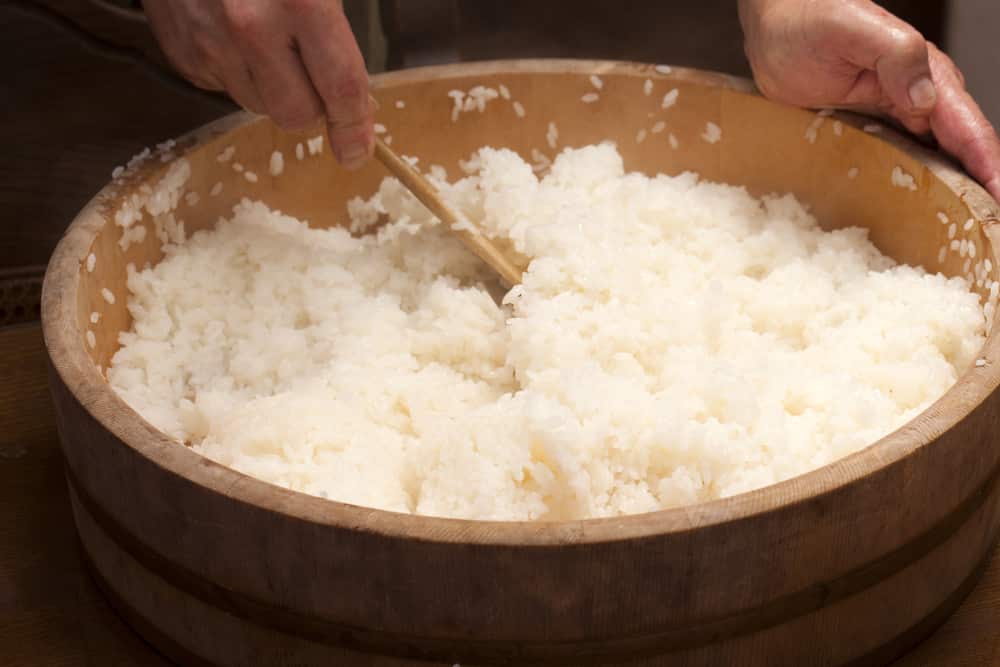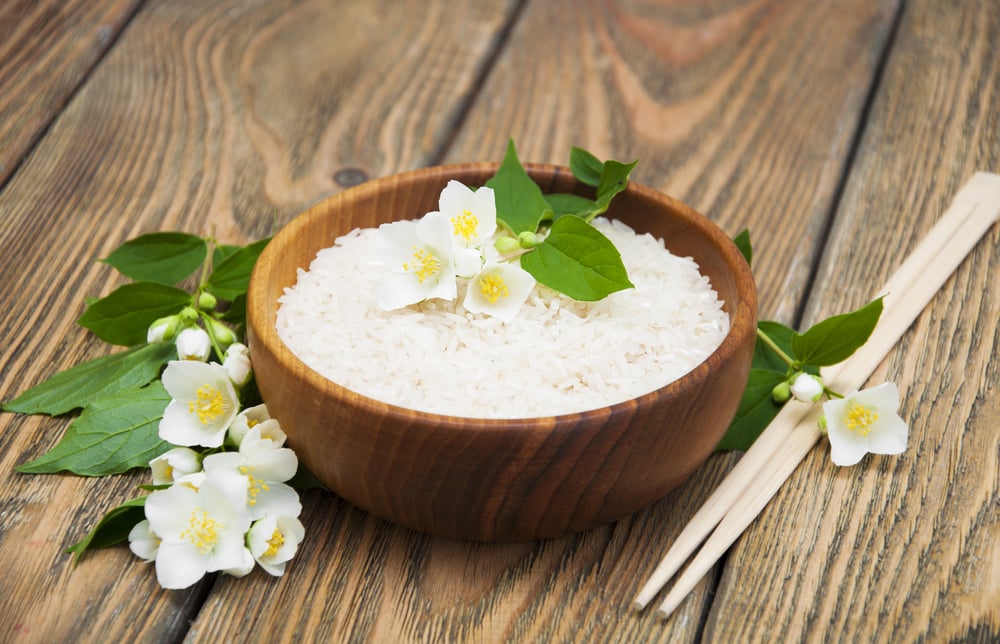
Sticky rice, also known as glutinous rice, is one of the most consumed dishes worldwide, particularly in Asia. The opaque and round rice grains make a sticky texture when cooked due to their low amylose content.
Sticky rice is an integral part of savory dishes as well as desserts. Thanks to its sticky nature, it could also be used as stuffing. You usually see recipes calling for boiled or steamed sticky rice, but it can be stir-fried as well.
From Japanese Mochi to Thai Mango rice, sticky rice is a staple in many dishes.
However, sticky rice is a bit expensive as compared to regular rice, which is why you may want to consider its alternative recipes. If you are looking for a suitable sticky rice substitute, you have landed at the right place.
The chewy texture of sticky rice will make you fall in love instantly. Its taste is a bit sweeter than regular rice, making them an excellent option for desserts.
Its name, “glutinous rice,” may fool you into thinking that it contains a huge proportion of gluten. However, you’d be surprised to know that it is entirely gluten-free.
As far as the nutrients are concerned, sticky rice is low in all nutrients, including fat, proteins, fiber, and other minerals. It offers plenty of health benefits, such as improved bone density, reduced inflammation, better metabolism, etc. In addition, it’s also considered beneficial for your heart.
Sticky rice comes in three different types: black and purple rice, sweet Japanese rice, and Thai sticky rice. Regardless of the variety you use, sticky rice needs ample time for soaking. The perfect time frame is to soak them overnight. This would drastically reduce the cooking time.
Sticky Rice Substitutes
Below are the best substitutes for sticky rice in the market.
1. Regular Rice
The first alternative to the sticky rice on our list is regular rice. If you can’t find sticky rice in the market or are afraid its high price will disturb your kitchen budget, regular rice is a great alternative. It is readily available in pretty much every region of the world.
While making regular rice at home, one thing to bear in mind is to not over-rinse the rice. Of course, rice is rinsed to ensure they are fit to eat, but if you rinse it too much, starch will wash away with the water.
Since starch is the sticky rice component, the chances are that your rice will lose its stickiness.
Soaking rice and pulses always help. But there is no ideal time for it, and it is also different for different types of rice. Some people soak rice overnight to reduce the cooking time.
If not overnight, anywhere between 30 mins to 4 hours will yield desired results. And yes, short-grained rice is generally the preferred option for sticky rice.
The trick in making regular rice sticky is using more water than usual. Use the amount you would usually use for traditional rice and then some extra tablespoons of water to make the rice stickier. However, don’t throw caution to the wind and add too much water.
Salt is essential in making rice. Even if you don’t usually use it in your recipes, consider adding a pinch of salt to enhance the flavor.
Let the water boil, and do not cover the pot. Keep monitoring it as you won’t want to let it simmer for hours and hours. If you happen to be forgetful, consider setting a reminder on your phone.
Reduce the heat when it is about to boil. Allow the rice to simmer for about 10 minutes until all water is absorbed. Turn off the heat and cover the pot for 10 minutes. That’s it; you have yourself the chewy and sticky rice made from regular rice.
They may not be the perfect alternative, but they are good enough when cooked the right way.
2. Sushi Rice
Sushi rice is another great alternative to sticky rice. Although it is used extensively in Japanese cuisines, Sushi rice is loved worldwide. Like sticky rice, it also has opaque rice grains.
Sushi rice is enjoyed the most among all the sweet rice, thanks to its sticky nature. For the most part, sushi rice is just short-grained rice mixed with sugar, vinegar, and salt.
Although this rice contains both amylose and amylopectin, unlike sticky rice, sushi rice has some amount of stickiness. The taste of sushi rice is also sweet to substitute for sticky rice in desserts. Thus, both are used interchangeably owing to similar texture and taste.
Making sushi rice at home is quite easy. All you need is two cups of short-grained rice, two cups of cold water, one tbsp of salt, and a quarter cup of sugar and vinegar (rice vinegar). Before you start cooking sushi rice, make sure to rinse the short-grained rice and let it dry properly.
Once the rice is completely dry, add it to a saucepan at a high heat level. Now add two cups of cold water and give it some time to boil.
When it has boiled, lower the heat level slightly and put the lid on it. When the 10-minute timer is up, let them simmer for another 10 minutes, but on a low heat level this time around.
When the rice has adequately boiled, remove it from heat and don’t touch it for about 15 minutes. While you are waiting, start preparing your seasoning mixture. Add vinegar, sugar, and salt to a saucepan and stir them gently to combine them.
Once the sugar has dissolved properly, transfer it all to a full-size bowl. Consider using a spatula since rice would be sticky by this time. Now take your vinegar solution and pour it onto the rice. However, don’t just throw it randomly; drizzle it gently over the rice.
Now stir the rice to get the vinegar solution mixed in. Some people suggest putting it under a fan to let it cool down and dry. That’s it; your sushi rice is ready! Use it to make sushi, sushi bowls, or several other recipes.
3. Jasmine Rice
Jasmine rice is the last substitute for sticky rice on our list, which is named after its jasmine-like scent. The grains are long and are primarily used in Thai cuisine.
Its softer nature makes it different from traditional white rice. So, it’s a good rule of thumb to use less quantity of water while making Jasmine rice. The sweet taste is similar to sticky rice. However, it is not that sticky.
If you cannot find sticky rice or glutinous rice bags in your nearby grocery store, check if the pearl, mochi, or sweet rice is available. These all kinds belong to the same sticky rice family and are sometimes sold under different tags.
Let’s be honest. There is no “best” sticky rice substitute. Your cooking technique can make a whole lot of difference when it comes to cooking sticky rice substitutes. Sushi and jasmine rice are popular options if you can’t get your hands on glutinous rice.
To make Jasmine rice at home, you’d need one and a half cups of water, one cup of Jasmine rice, one tbsp of olive oil or canola oil, and a half tbsp of Kosher salt. You can also use regular salt, but Kosher salt is generally preferred for Jasmine rice.
Now pour the water into a saucepan and add oil and kosher salt, and bring it to a boil at high heat. Make sure to cover it properly using a tight-fitting lid. When you notice that the mixture is boiling, add rice and stir it gently. Now cover it again with its lid and let it boil for 15 minutes at low heat.
Once it has boiled properly, its Jasmine-like aroma will spread all around your kitchen as soon as you take off the lid, which is an indication that the Jasmine rice is ready to eat!


